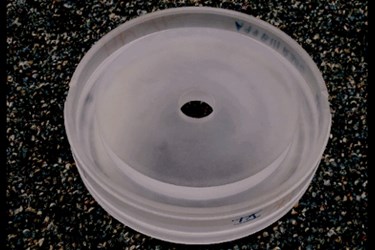New Lens Design To Enable More Effective Kidney Stone Treatment
By Joel Lindsey

A group of researchers has designed a new lithotripsy lens capable of creating more focused shock waves for improved kidney stone treatment, a new report indicates.
“I’ve spent more than 20 years investigating the physics and engineering aspects of shock wave lithotripsy,” Pei Zhong, Anderson-Rupp Professor of Mechanical Engineering and Materials Science at Duke University and leading member of the research team, said in an article published on Duke’s website. “And now, thanks to the willingness of Siemens to collaborate, we’ve developed a solution that is simple, cost-effective and reliable that can be quickly implemented on their machines.”
The technique devised by Zhong and his research team — composed of scientists from Duke’s Pratt School of Engineering, Duke University Medical Center, and the mathematics department at the University of North Carolina at Chapel Hill — creates more focused, more powerful, and more efficient shock waves by physically reconfiguring the geometry of traditional lithotripsy lenses. In particular, the researchers cut a small groove near the perimeter of the backside of the lens, and readjusted its overall curvature.
These changes “realigned the device’s focal point and optimized the pressure distribution with a broad focal width and lower peak pressure. It also allowed more cavitation bubbles to form around the targeted stone instead of in the surrounding tissue,” according to the Duke article. Cavitation bubbles are one of the primary mechanisms by which shock wave lithotripsy breaks apart kidney stones inside the patient’s body.
These latest improvements to lithotripsy treatment techniques come as a response to some of the long-standing inefficiencies associated with traditional lenses.
In recent years, lithotripsy device manufacturers tried increasing the power of their lithotripters in order to create a more tightly focused shock wave. By increasing the power, though, the focal point of these lenses shifted by as much as 20 millimeters, creating efficiency loss in treatment and increasing the risk of damaging tissue surrounding the targeted kidney stone. These higher-power systems also generated a secondary wave that interfered with the formation of cavitation bubbles.
“We were presented with the challenge of engineering a design solution that mitigated these drawbacks without being too expensive,” said Zhong. “It had to be something that was efficient and reliable, but also something that the manufacturer was willing to adopt. So we decided to focus on a new lens design while keeping everything else in their system intact.”
Results from laboratory tests using synthetic stones inside model human kidneys and in anesthetized pigs indicate a high rate of success in pinpointing and breaking apart kidney stones. Details of the study have been published recently in the journal Proceedings of the National Academy of Sciences.
Zhong hopes to move the lens into clinical trials in Germany sometime this summer.
Image credit: Duke’s Pratt School of Engineering
